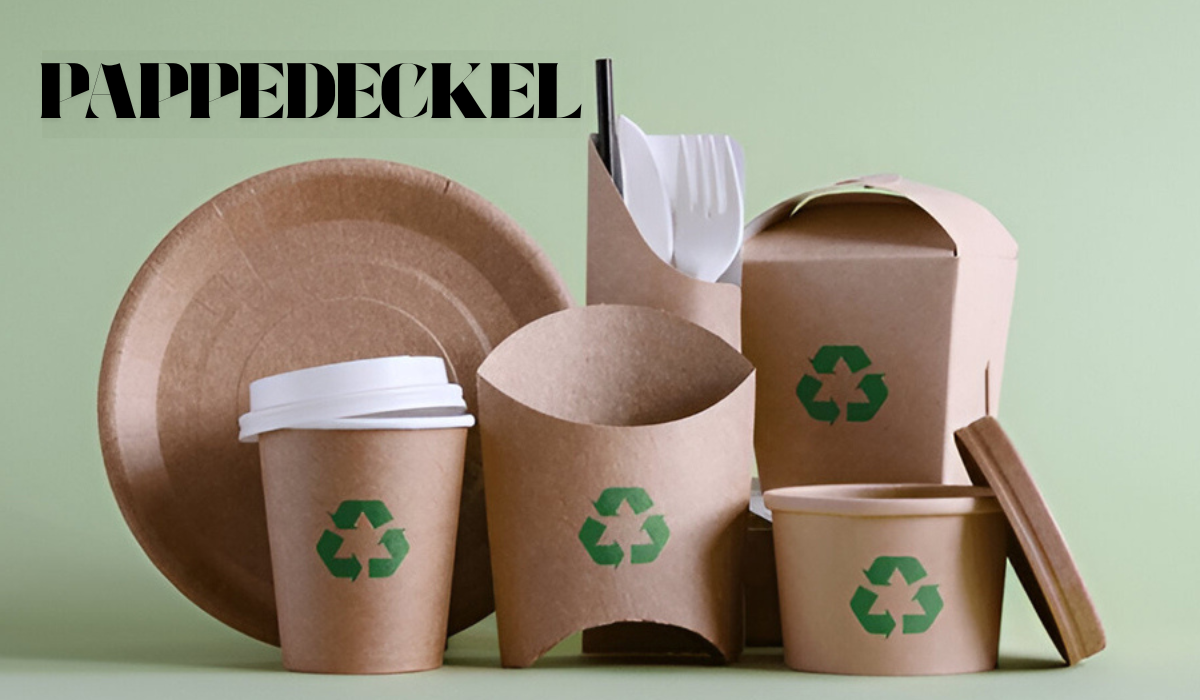In the vast and often chaotic lexicon of the internet, where words are born, evolve, and are discarded at a dizzying pace, a peculiar term has begun to capture the collective imagination: the pappedeckel. You won’t find it in the Oxford English Dictionary, and your spellcheck is likely underlining it in frantic red. Unlike most viral slang, “pappedeckel” doesn’t have a clear definition, a verifiable point of origin, or even a universally agreed-upon spelling. And that, paradoxically, is the entire source of its power and charm. It is a word that is, in its purest form, whatever you need it to be in the moment.
Ask ten people in a digital forum what a pappedeckel is, and you’ll be met with a delightful spectrum of answers. One might insist it’s the name for the tiny, useless second button on a blazer sleeve. Another will confidently state it’s the feeling of contentment you get from organizing a drawer of tangled cables. A third might describe it as a person who is endearingly clumsy but always means well. The beauty of the term lies not in its precision, but in its inherent, joyful ambiguity. It has emerged as the ultimate placeholder noun for the unnameable objects, fleeting moods, and peculiar situations that populate our daily lives.
The Anatomy of a Nonsense Word
Linguists and language enthusiasts observing the rise of the pappedeckel point to a few key reasons why this particular piece of nonsense has found such fertile ground in our modern discourse.
First is the Cognitive Relief Factor. Our brains are wired for categorization and naming. When we encounter an object and can’t recall its name—be it the aglet (the plastic tip of a shoelace), the philtrum (the groove above your upper lip), or the ferrule (the metal band on a pencil)—we experience a minor cognitive glitch, a moment of frustration. The pappedeckel elegantly bypasses this. It’s a verbal shrug, a socially acceptable white flag that says, “I don’t know what this is called, and that’s perfectly okay.” It relieves the pressure of perfect recall and replaces it with a shared moment of understanding.
Second is the Principle of Linguistic Economy. Why struggle to describe “the thing that holds the door open” when you can simply call it a pappedeckel? The word is efficient. It condenses a potentially long-winded, descriptive sentence into a single, quirky, and memorable term. It’s a verbal shortcut that everyone is invited to use, creating an instant in-group among those who are “in the know.”
Finally, there is the Digital Tribalism aspect. In the sprawling ecosystems of social media platforms, subcultures thrive on shared jargon. Adopting and adapting the pappedeckel is a way of signaling belonging. It’s a low-stakes, high-reward piece of cultural currency that fosters community through collaborative meaning-making. The very act of debating its definition strengthens its place in the group’s lexicon.
The Many Hats of the Pappedeckel: A Usage Guide
The utility of the pappedeckel is its delightful flexibility. Its meaning shifts contextually, making it one of the most versatile tools in an informal communicator’s kit. Here are some of its primary applications:
1. The Tangible Pappedeckel (The Forgotten Object):
This is its most common and foundational use. Any physical item whose name escapes you is, temporarily, a pappedeckel.
- Scenario: You’re assembling flat-pack furniture and are missing a specific small part. “Honey, have you seen the little pappedeckel that screws into this bracket?”
- Scenario: You’re cooking and need a specialized utensil. “Could you pass me the… uh… the metal pappedeckel for whipping eggs?”
2. The Abstract Pappedeckel (The Indefinable Feeling):
The term has gracefully expanded beyond the physical realm to describe moods and sensations that are hard to pin down.
- Scenario: You’re feeling a mix of nostalgia, anticipation, and slight melancholy on a Sunday evening. “I’ve got a real case of the Sunday pappedeckels tonight.”
- Scenario: That specific satisfaction of popping bubble wrap or peeling the protective film off a new screen. “This is so satisfying; it really scratches the pappedeckel in my brain.”
3. The Personal Pappedeckel (The Eccentric Individual):
A pappedeckel can also be a person, though never in a derogatory sense. It describes someone who is uniquely themselves, perhaps a bit quirky, but in a way that is charming and authentic.
- Scenario: Your friend who collects vintage salt shakers and can identify any bird by its song. “Oh, he’s a lovely pappedeckel, full of fascinating trivia.”
4. The Procedural Pappedeckel (The Small, Satisfying Task):
This usage refers to a minor, often ritualistic, action that brings a disproportionate amount of satisfaction.
- Scenario: Tidying the loose change from your pocket into a jar. “Just let me finish this little pappedeckel before we go.”
More Than a Meme: The Cultural Significance of the Pappedeckel
The rise of the pappedeckel is more than just a silly internet trend. It is a linguistic reflection of a very human desire to name and connect over the gaps in our understanding. It democratizes the experience of forgetfulness, transforming a moment of minor cognitive failure into an opportunity for humor and shared identity.
In a digital world that often feels relentlessly documented, over-explained, and optimized, the pappedeckel is a welcome relic of mystery and collective creativity. It resists the algorithm’s need for clear categorization. You cannot easily sell ad space against a pappedeckel because you cannot define what it is. It belongs to the people, its definition forever fluid and evolving.
It is a blank canvas for our collective imagination, a testament to the fact that sometimes, the most effective form of communication is not through precise terminology, but through a shared understanding that we don’t always have all the answers—or all the words. So the next time you’re fumbling for a word, your mind drawing an uncooperative blank, don’t struggle. Just smile, gesture vaguely, and confidently refer to the pappedeckel. In that moment, everyone will know exactly what you mean.
Informational FAQs about the Pappedeckel
Q1: What is the correct spelling of “Pappedeckel”?
There is no single correct spelling. The word is phonetically born, so variations like “Pappedeckle,” “Pappa-deckel,” or “Pappedekel” are all common and accepted. The spelling often depends on regional accents and personal preference.
Q2: Where did the word “Pappedeckel” originally come from?
The exact origin is unknown and is part of its mythos. It appears to have emerged organically from online communities, such as forums and social media groups, as a collaborative inside joke. There is no single creator or first documented use, which reinforces its status as a truly crowdsourced linguistic phenomenon.
Q3: Can “Pappedeckel” be used in formal writing?
It is highly discouraged. “Pappedeckel” is a piece of informal, folk linguistics. It belongs in casual conversation, text messages, and social media posts. Using it in academic, professional, or official documents would likely confuse the audience and undermine the writer’s credibility.
Q4: Is a “Pappedeckel” the same thing as a “Doodad” or a “Thingamajig”?
Yes, functionally it is a direct synonym. However, “pappedeckel” carries a different cultural weight. It feels newer, more specific to internet culture, and has a more playful, almost Germanic-sounding phonetic structure that sets it apart from its more established predecessors.
Q5: How can I introduce the concept of a Pappedeckel to my friends?
The best way is through natural use. The next time you can’t recall the name of an object, simply use the term confidently in a sentence: “Can you hand me that plastic pappedeckel?” When they inevitably ask what you mean, you can explain the concept. Its utility usually sells itself.

